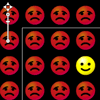Animations
As of the 23rd May 2022 this website is archived and will receive no further updates.
understandinguncertainty.org was produced by the Winton programme for the public understanding of risk based in the Statistical Laboratory in the University of Cambridge. The aim was to help improve the way that uncertainty and risk are discussed in society, and show how probability and statistics can be both useful and entertaining.
Many of the animations were produced using Flash and will no longer work.
Many of our articles make use of illustrative animations which we try to make as reusable as possible. If you have some data which could benefit from one of these visualisations, we encourage you to go ahead, but do get in touch. Here we list all the embeddable animations we have created so far.
Thumbnails link to the live animation, and titles link to a (possibly) expanded version of the catalogue entry.
Within each animation, the about button provides author and licensing information and links to the original articles. The embed button gives you code that can be pasted into an HTML file. If you upload the code to a web server, we will need to enable it for you before it will work.


 In this animation, a happy smiley has won the lottery. The other 16,777,215 sad smileys all lost. Can you find the winner? We've given you some help - he's in the square outlined in white, and you can zoom and pan to find him. In the standard 6 ball 1-49 lottery, the chance of matching all 6 is comparable at 1 in 13,983,816.
In this animation, a happy smiley has won the lottery. The other 16,777,215 sad smileys all lost. Can you find the winner? We've given you some help - he's in the square outlined in white, and you can zoom and pan to find him. In the standard 6 ball 1-49 lottery, the chance of matching all 6 is comparable at 1 in 13,983,816.
